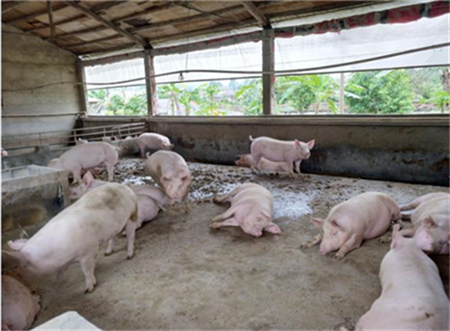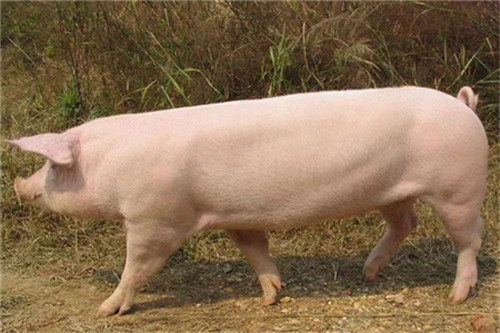The overall design and planning of a pig farm for 200 fertile sows
At the stage of the upsurge of the market, most pig-raising friends write to ask how to build a large-scale pig farm. How to build the scale of 200 sows, is there a reasonable design plan, and what is the breeding cycle? To sum up the above problems, we have launched this 200 sow planning scheme, which is convenient for everyone to refer to and learn. next, let's take a look at how to plan!
I. Target scale
Build a 10,000 pig farm with an annual output (sales) of 4000 lean commercial pigs. Based on the average annual supply of 18 commercial pigs per sow, the total number of breeding pigs in the farm is as follows:
1. Sows:
A total of 220 sows are raised and produced annually, of which 10 are for the production of reserve sows, and 50 reserve sows are raised annually (raising in two batches and updating the sow herd at a knockout rate of 25%). The actual production of sows is 220 × 92% (about 8% of sows can not be produced) = 202.
2. Breeding boar:
Nine breeding boars are raised and produced every year (according to the male-female ratio of 1:25), and 2 reserve boars are raised (or introduced) every year.
3. Production cycle:
A total of 42 weeks from mating to listing.
16 weeks pregnancy + 4 weeks breastfeeding + 6 weeks nursing + 16 weeks fat = 42 weeks
4. Reproductive cycle:
16 weeks pregnancy + 4 weeks breastfeeding + 1 week mating + 2 weeks production ineffective period = 23 weeks
52 weeks / 23 weeks = 2.27 births / sows / year
5. Production standards:
202 × 2.27 / year = 458 / year, 9 / week
9 fetus / week x 9 weaned pigs / litter x 97% 79 weaned pigs / week
79 × 97% (3% care mortality) = 76 pigs out of the nursery / week
76 × 98% (2% fattening mortality) = 75 pigs / week
6. Group maintenance standards:
The production life of sows was 5.5 to 5.75, with an average of 5.67.
Average useful life = 5.67 / 2.27 / year = 2.5 years
Number of annual renewal sows = 202 × 40% (annual renewal rate) = 80
The average useful life of boars is 2 years.
Number of annual renewal boars = 9 × 50% (annual renewal rate) = 5
7. Feed utilization:
According to the annual production of 4000 commercial pigs:
4000 head × 100kg × 3.5 1 feed / weight ratio = 1400 tons of feed / year
Among them, sow feed:
202head x 365days x 2.75kg/ days = 203t / year, about 1t / sow / year
Conservation pig feed: 79 care pigs / week × 52 weeks / year = 4108
4108 × 17 kg (25kg~8kg) × 2.0 1 feed to weight ratio = 140t / year
Production of fattening pig feed:
4000 head / year × 75kg (100~25kg) × 3.5 / feed weight ratio = 1050 tons / year
Total feed consumption = 203 / 140 / 1050 / 1393 tons, equivalent to 6.6 tons / sow / year
8. Water consumption estimation machine:
Calculated on the basis of 20 litres of water per pig per day (50% drinking, 50% washing, etc.)
Equivalent to 200 litres of water per sow (10 piglets) per day, then:
202sows x 200L / day = 40400 litres of water / day = 40 tons of water / day
202 sows adopted a balanced production model for the whole year from litter to fattening, giving birth to 9 litters per week.
The fields and equipment of the following pig herds are estimated on this basis.
Two. estimation of fields and equipment of each pig herd
1. Sow positioning bar: 179, of which:
Pregnant sow location bar: 108 (12 weeks x 9 fetus / week), from 4 weeks of pregnancy confirmation to 1 week before delivery
12 weeks).
Eliminated sow location bar: 3 (1 / week x 3-week retention period)
Breeding sow location column: 68 (from 2 weeks weaning to re-mating period + 4 weeks pregnancy confirmation, 6 weeks / 80% delivery rate x 9 births / week).
2. Backup sow field: 6 columns (12 weeks × 1.5 reserve sows / week / 3 / column).
3. Sow breeding column: 2 (9 / week / 80% delivery rate = 11 sows / week, 2 / 3 times /
Sows, use each pen 2 times or 3 times).
4. Boar location column: 9 (9 boars).
5. Delivery sow pen: 45 (4 weeks lactation + 1 week turnover = 5 weeks, 5 × 9 litters / week).
6. 24 pig pens (6 weeks × 9 fetuses / week × 9 weaned pigs / litter = 486, 486 / 20 / pen).
7. Production fattening pig pen: 72 (16 weeks + 2 weeks turnover = 18 weeks, 18 weeks × 79 heads / week = 1420 heads, 20 heads / column).
8. Isolation fence and management room for sick pigs, etc.

Schematic diagram of nursery
Plan of the nursery
Plan of fattening house
Plan of empty and pregnant sow house
III. Construction area of pig farm
1. Area of breeding pigs:
179-8-9-9-196 breeding pig herd fields
196 × 2.5 square meters / field = 490 square meters
two。 Delivery column area: 45 delivery columns x 8 square meters = 360 square meters
3. Nursery fence area: 486 heads x 0.35 square meters / head = 170 square meters
4. Growing and fattening pig pen area: 1420 head × 1.0m2 / head = 1420 sq m
5. Management rooms, etc.: 4 x 15 square meters = 60 square meters
Total construction area of pig farm: 2500 square meters.
Plan of delivery room
Schematic diagram of conservation pigs
Schematic diagram of fattening house
IV. Civil construction
1. Breeding pig house: 2 buildings (of which: 1 breeding, 1 pregnant)
13 m x 19 m / building x 2 buildings = 494 square meters
2. Delivery house: 1 building (2 rooms) each 24 m × 8 m x 2 rooms = 384 square meters
3. Nursery: 1 building (6) 14.25 m x 4 m x 3 rooms = 171 square meters
4. Production of fattening pig houses: 9 buildings each 71 m x 5 m x 4 buildings = 1420 square meters
5. Management rooms, etc.: 4 x 15 square meters = 60 square meters
The total area of the above five pig houses is 2530 square meters of stomach.
V. three links, one leveling and infrastructure
1. Road (cement road): the passageway between the pig houses in the pig farm and the main roads outside the farm.
two。 Water, electricity and telephone, etc.: layout of water pipes, equipped with transformers, power distribution rooms, power lighting lines, telephones, etc.
3. Fence: except for the paddock near the river, all the others need to build a paddock.
4. Greening: greening in pig farms.
5. Other basic facilities: disinfection pool (3 channels), doorman (including disinfection pool, changing room) and sewage treatment (ditch, etc.).
VI. Fecal and sewage treatment
Build biogas digesters to solve the pollution problem.
VII. Land expropriation
The pig farm needs about 2.5-3 times the building area, and a part of the office facilities is about 10-12 mu.
VIII. Investment budget
(1) Civil construction
1. Pigsty: the total area is 2530 square meters, calculated at 400 yuan per square meter, totaling 1.01 million yuan.
2. Equipment purchase and installation cost: 500000 yuan
3. Fees for three links, one leveling and basic facilities:
Road, water, electricity, fence, pig farm greening and sewage treatment (ditch, etc.) expenses.
(2) introduction fee for breeding pigs
1. Sows: (according to the introduction of reserve pigs) 220x2800 yuan / sow = 616000 yuan
2. Boar: 9 × 4000 yuan / head = 36000 yuan
(3) other supporting investments
The supporting investment of the pig farm also includes the purchase of means of transport, feed plant equipment, heating facilities, construction of biogas digesters and liquidity, etc., all of which are not budgeted here. The total investment of the above two items is only 2.152 million yuan.
This plan needs to be determined and implemented according to the actual on-site situation, for reference only!
- Prev

What is the harm of raising pigs in cement land has been picked out!
What is the harm of raising pigs in cement land has been picked out!
- Next

Different feeding and management should be given according to different types of pigs in high temperature season.
Different feeding and management should be given according to different types of pigs in high temperature season.
Related
- On the eggshell is a badge full of pride. British Poultry Egg Market and Consumer observation
- British study: 72% of Britons are willing to buy native eggs raised by insects
- Guidelines for friendly egg production revised the increase of space in chicken sheds can not be forced to change feathers and lay eggs.
- Risk of delay in customs clearance Australia suspends lobster exports to China
- Pig semen-the Vector of virus Transmission (4)
- Pig semen-the Vector of virus Transmission (3)
- Five common causes of difficult control of classical swine fever in clinic and their countermeasures
- Foot-and-mouth disease is the most effective way to prevent it!
- PED is the number one killer of piglets and has to be guarded against in autumn and winter.
- What is "yellow fat pig"? Have you ever heard the pig collector talk about "yellow fat pig"?

